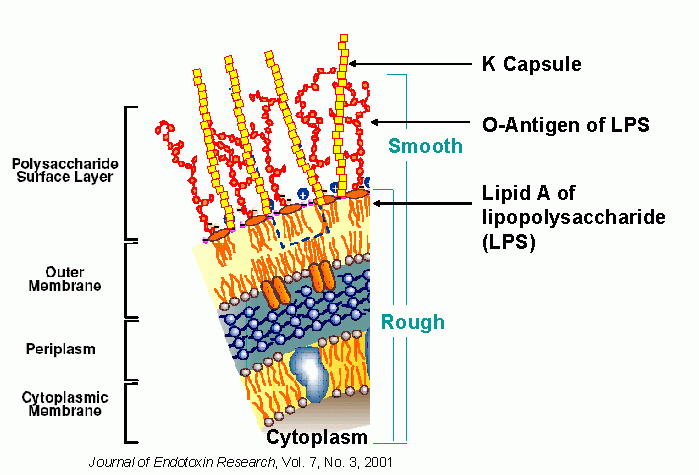BerkiGEM2007Present4
From 2007.igem.org
The Chassis
Introduction There are several core issues associated with introducing E. coli into the bloodstream of human beings or other animals. First is the issue of sepsis. E. coli possesses a species called lipid X, or endotoxin, in its outer membrane which causes the release of TNFalpha in humans. This is an essential process of the innate immune system, but with high doses of lipid X, can be lethal. Bactoblood must have some ability to avoid this series of events. Similarly, there are a variety of additional features in E. coli that can elicit strong adaptive immune responses including the pili and flagella. From the bacterium's perspective, the interaction with the bloodstream is no more desirable. The complement system, another core component of the innate immune response, can kill bacteria directly. Additionally, phagocytic cells including macrophages and neutrophils, can engulf and kill E. coli. Fortunately for our purposes, there are a variety of modifications we can make to circumvent these problems.
The E. coli outer surface
To understand these modifications, we must first understand what features are present in E. coli strain MC1061, our starting point for the Bactoblood. Like most strains of E. coli used in the lab, MC1061 comes from the MG1655 lineage and is a "rough" strain. Unlike other "smooth" strain, MC1061 lacks surface-displayed capsular polysaccharides known as K capsules and O antigens.
White blood cells constantly roam the bloodstream in search of foreign bodies. The human immune system targets potentially infectious bacteria by membrane signature and the presence of antigens (PLEASE ADD CLEAR INFO HERE CHRIS, LIKE THE VERY FIRST INTRO POWERPOINT YOU SHOWED US). Some bacteria, however, are able to evade detection. Our bacteria mimics these characteristics.
O1 Antigen
Salmonella includes this antigen. It allows it to effectively enter humans. We have integrated this gene, known as wbbL (? i hope this is right), into the genome of our bacteria.
-INSERT YOUR ATTRACTIVE PICTURE HERE-
K Capsule
MR. STRAIN possesses a carbohydrate capsule which further prevents recognition by the human immune system. We have also cloned this gene into our bacteria genome.
-INSERT OTHER ATTRACTIVE PICTURE HERE-
